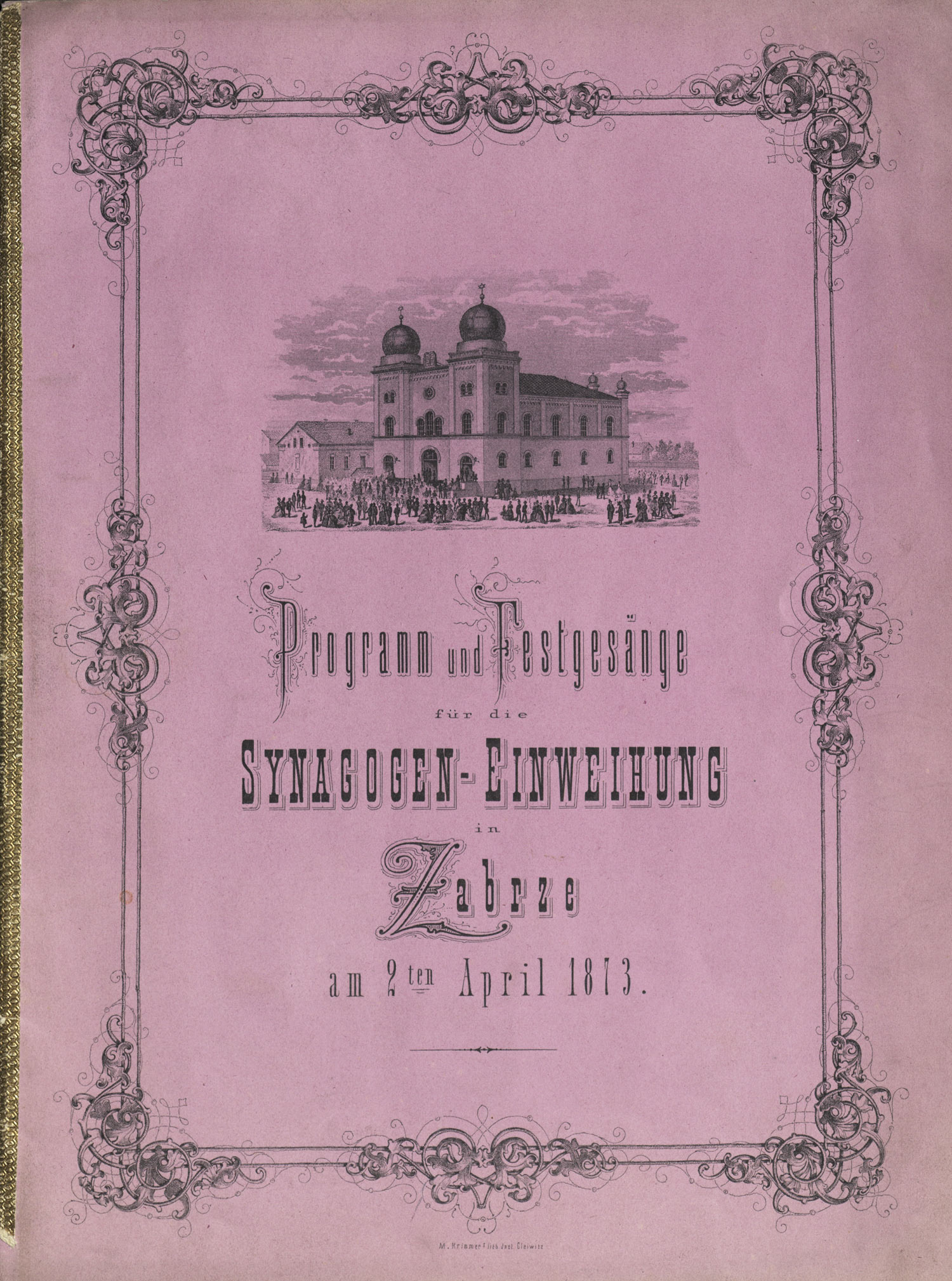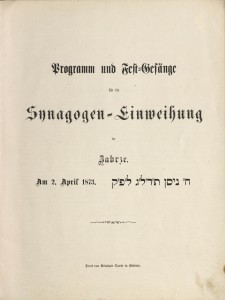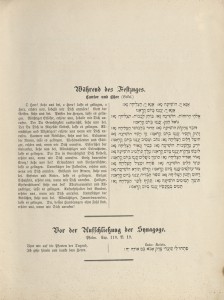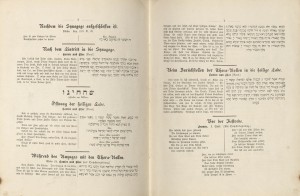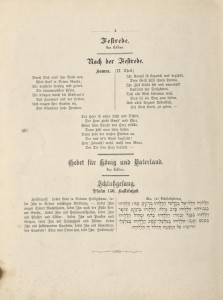While Jean Bungartz’s (1854 –1934) illustration of the Lechenich synagogue dedication (also in this section) shows us what the inauguration procession looked like, the program for the inauguration on April 2, 1873, of the synagogue in Zabrze (renamed Hindenburg in 1915) provides verbal descriptions to go with these scenes. Texts in both German and Hebrew present details about every stage in the ceremony: the procession leading up to the synagogue, before and after the synagogue doors are opened, after entering the synagogue (followed by the recitation of the Shehecheyanu blessing), opening the ark, processing with the Torah scrolls, returning the Torah scrolls to the ark, before, during, and after the rabbi’s address, reciting the prayer for king and country, and singing the final song. Rabbi Landsberg began the ceremony with songs and prayers. Rabbi Ferdinand Rosenthal (1838–1921), who served as rabbi at Beuthen (Bytom), delivered the sermon in German. The account underscores how formal the ceremonies could be, with multiple parts and multiple rabbis assuming roles.
The synagogue was a two-towered brick building on a corner plot in Ringstrasse (today’s Brysza Street). The verse “This is none other than the house of God, and this is the gate of heaven” (Genesis 28:17) is inscribed over the building’s three entrances. Inside, galleries for women lined three sides of the main prayer hall. The synagogue originally had a seating capacity of 300. The building was enlarged in 1899 to accommodate communal offices, classrooms, and a basement mikveh. The synagogue was destroyed during Kristallnacht, November 9, 1938.
